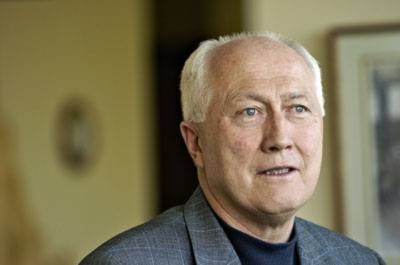The next time you find yourself behind a puttering 1908 Buick Model 10 on the Alaska Highway, don’t honk angrily.
Instead, give a friendly wave to Marl Brown, who just drove 994 kilometres from Fort Nelson to Whitehorse.
No airbags, no seat belts. No roof.
Top speed 32 kilometres per hour.
Wife in the backseat.
There are many who make the drive from Fort Nelson to Whitehorse, but few who do it in such unparalleled style.
“I just did it to celebrate the car’s 100th birthday,” said Marl Brown, owner of the car and curator of the Fort Nelson Heritage Museum.
Stationed next to Marl throughout the journey has been co-pilot Bill McLeod, a frequent volunteer at the Fort Nelson museum.
Perched perilously in the rear “mother-in-law” seat is Mavis Brown, a massage therapist and Marl’s wife of 52 years.
“It’s quite windy back there,” she said.
Clad in long white beard, blue work pants and suspenders, Marl almost looks like he could be the car’s original owner; a distant relic from the waning days of the steam age.
“He just looks 100, he’s not really that old,” said Mavis.
In fact, he’s a spry 76.
When Marl’s uncle bought the Buick in the late 1940s, it was still being used as a fish hauler in Northern Alberta.
A semi-dilapidated wreck by the time it got passed down to Marl, he got it up to running condition about 15 years ago.
Amazingly, except for some reconstructed fenders and a pair of bicycle flashers mounted on the sides of the car for increased visibility, the Buick is still all-original.
Pressing the side-mounted brass air horn emits a distinct dolphin-like squawk.
The car does away with the nuisance of an onboard electrical system, meaning that headlights are simply two hand-lit acetylene torches.
A side-mounted kerosene lamp gives the driver some added nighttime visibility.
Popping the hood, Marl revealed the ancient 22.5 horsepower engine that had faithfully carried them on their journey.
“Basically, it’s the same kind of engine that we’d use today, except it doesn’t have a bunch of electronic crap on it,” said Marl.
In the old days, all you needed to fix an engine was common sense, he said.
Surprisingly, clouds of notorious Yukon insects haven’t been a problem for the intrepid trio.
Marl pointed to the one solitary bee embedded in his grille, and noted “the bugs seem to keep ahead of us.”
Mechanically, the car has performed beautifully.
With no flat tires and no breakdowns, the vehicle has proved a match for anything the treacherous Alaska Highway could throw at it.
Ironically, the biggest mechanical problems came from the car’s modern-era support vehicle, which broke down around Steamboat Mountain.
A native of Delburne, Alberta, Marl and his wife first moved to Fort Nelson in 1957 (“driving a 1949 International one-ton”).
There, Marl spent years working for the Canadian Army as a camp mechanic.
Since he can remember, Marl has cultivated a close connection to the mystique of old automobiles.
“He built his first car when he was … Eight? Ten? Twelve years old? When was it, Marl?” said Mavis.
The combination of antique cars and treacherous northern journeys is also nothing new to Marl.
In 1975, he drove from Fort Simpson to Fort Nelson in a 1926 Model T Ford.
It was still years before a road would be built between the two cities and the crossing was done in winter — allowing him to cross the frozen rivers.
“I’ve done other trips that would curl your hair,” he said.
Unfortunately, even after enduring kilometres of rain, cold and exhaust fumes, Marl says he is rarely rewarded with one of Mavis’ professional massages.
“She says I whine too much, so I don’t get one,” he said.
